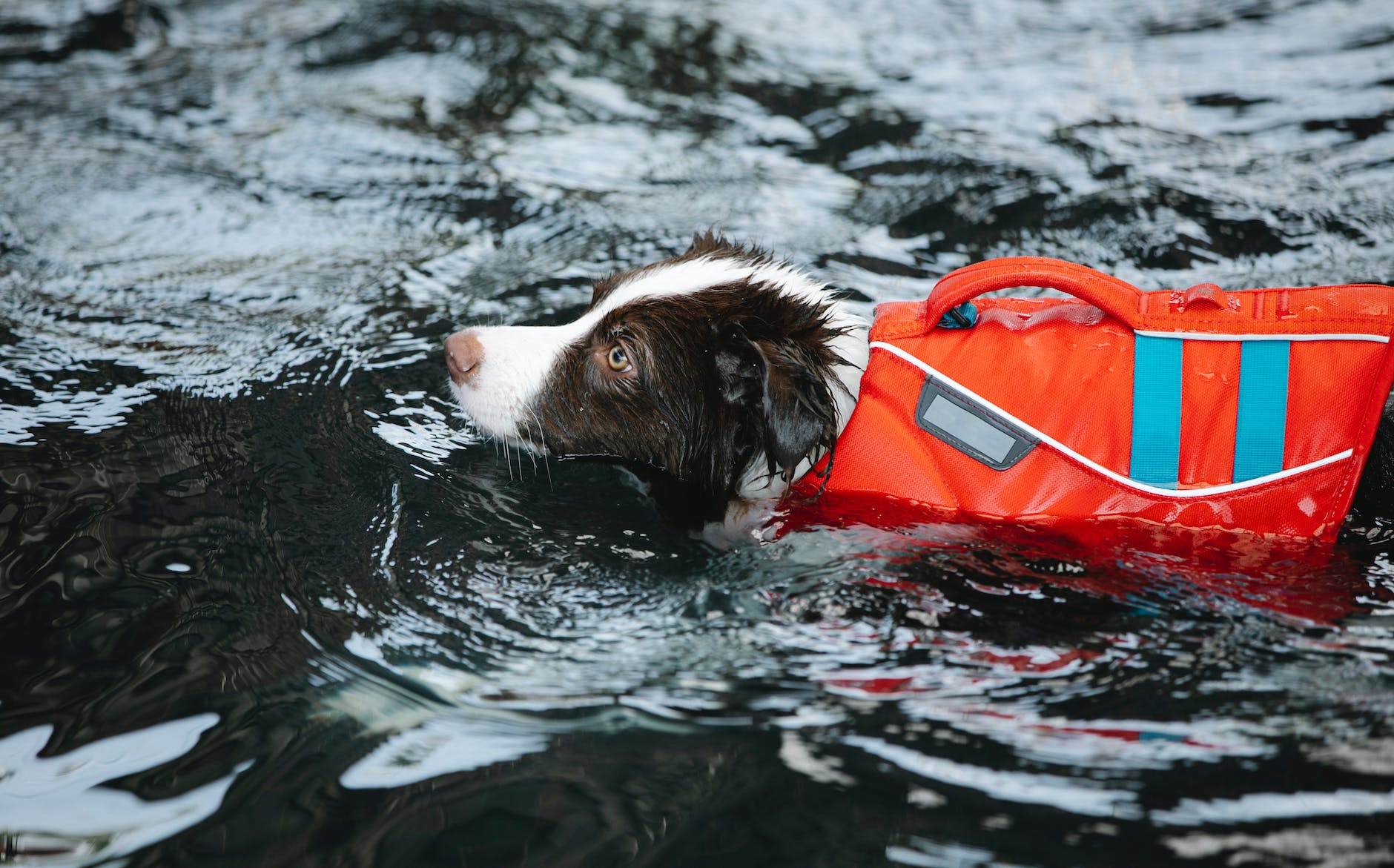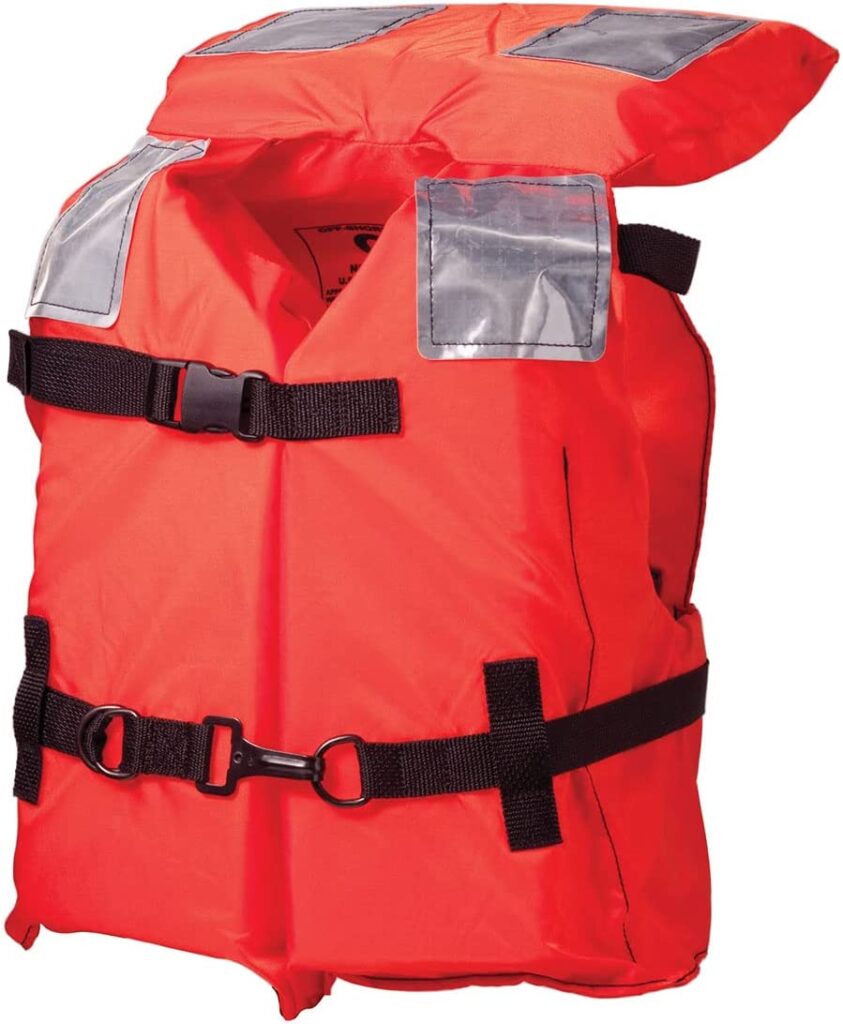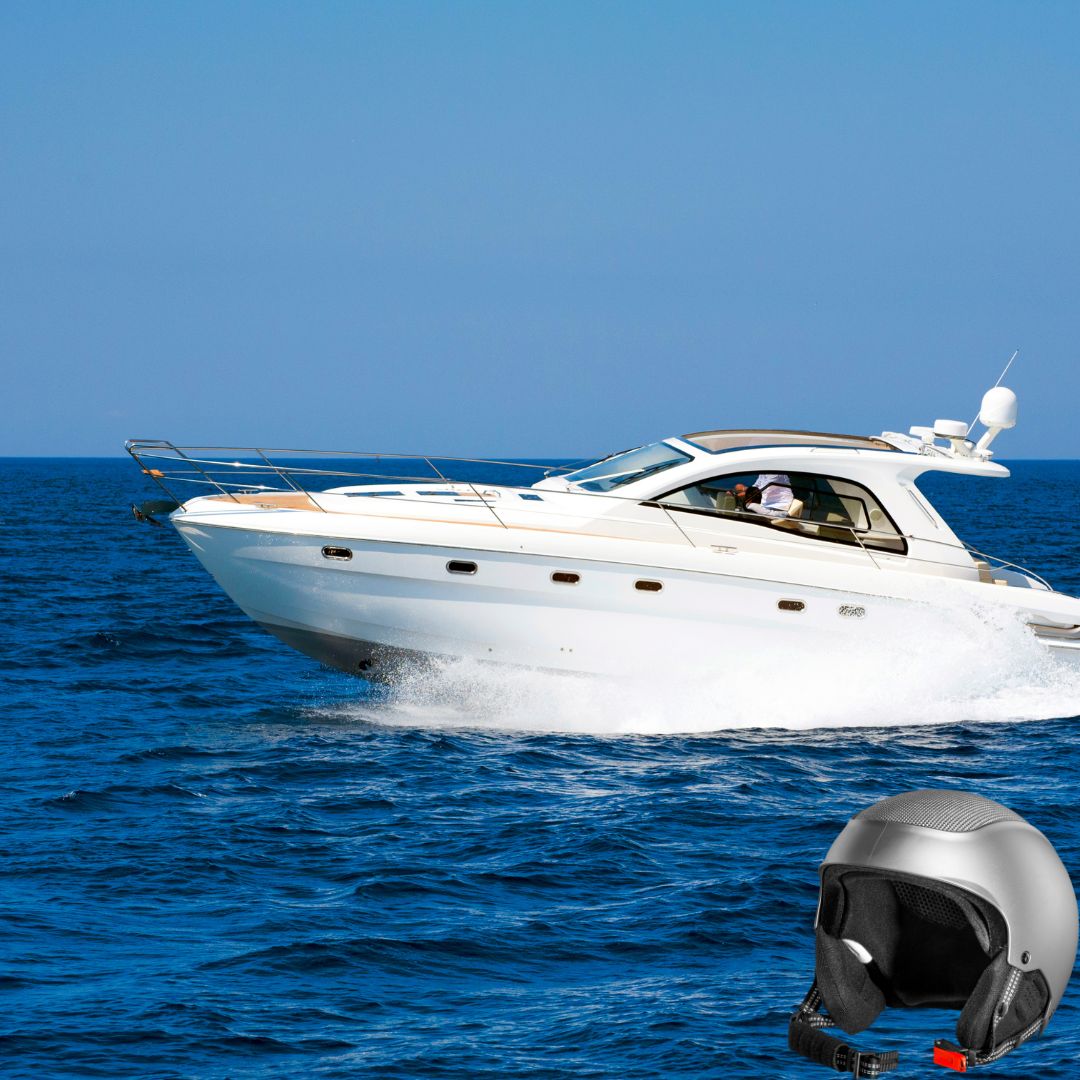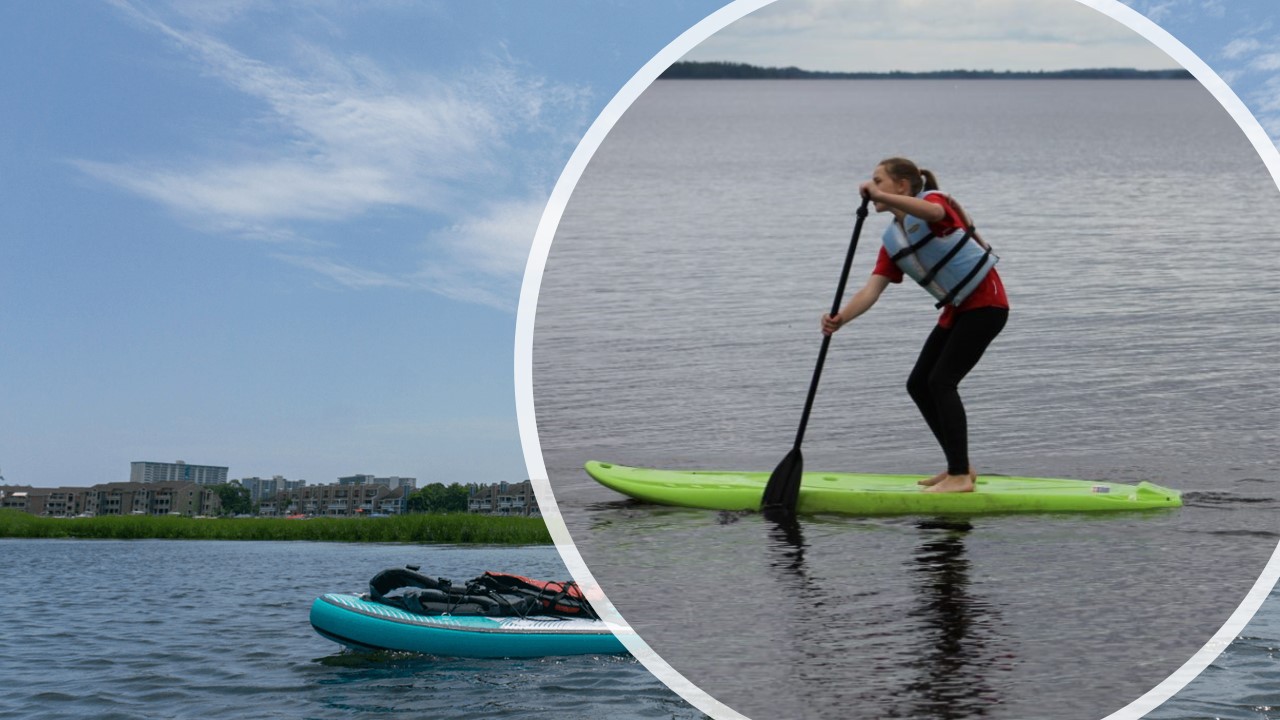What Should You Do With A Torn Life Jacket
Looking for an answer to “What should you do with a torn life jacket? Picture this: you’re out on the open water, embracing the thrill of aquatic adventures. But suddenly, you notice a tear in your trusty life jacket. Panic sets in, and you wonder, “What should I do now?”
Life jackets are more than mere safety gear; they are your shield against the unpredictable elements of the deep blue. But when tears strike, it’s crucial to know how to handle the situation swiftly and confidently.
In this comprehensive guide, we will explore various aspects related to torn life jackets. From repairing and disposing of torn life jackets responsibly to upgrading and understanding legal regulations, we will cover it all. Stay tuned!
What Should You Do With A Torn Life Jacket
When faced with a torn life jacket, it’s essential to take appropriate action to ensure your safety in water-related activities. Here’s what you should do if you find yourself with a torn life jacket:
1. Assess the Damage
Start by carefully examining the extent of the tear or damage. Determine whether it’s a minor puncture or a more significant tear that compromises the jacket’s integrity.
2. Repair Options
If the damage is minor and repairable, you have a few options to consider:
– Patching: Look for patching kits specifically designed for life jackets. These kits typically include adhesive patches that can be applied to cover small tears. Follow the manufacturer’s instructions on how to properly attach the patch to ensure secure and durable repair.
– Sewing: If you’re skilled in sewing, you may be able to stitch up the tear using a heavy-duty needle and strong thread. Ensure that the stitches are tight and close together to provide an effective repair.
– Professional Repair: If you’re unsure about your ability to repair the life jacket or if the damage is significant, it’s advisable to seek professional assistance. Look for certified life jacket repair services or contact the manufacturer for guidance.
3. Replacement Considerations
In some cases, the torn life jacket may be beyond repair or it may not be recommended to use a repaired jacket for safety reasons. If that’s the case, to avoid drowning with life jacket, it’s crucial to replace the damaged life jacket promptly.
Discard the torn jacket responsibly by following local regulations and considering environmentally friendly disposal methods.
4. Regular Inspections
Regardless of whether your life jacket has been repaired or replaced, it’s important to establish a routine for inspecting it.
Regularly check for any signs of wear, tear, or damage. Look for loose threads, faded material, or weakened buoyancy materials. Conduct these inspections before each use and follow any manufacturer’s recommendations on the frequency of inspections.
5. Proper Maintenance
To prolong the lifespan of your life jacket and ensure its effectiveness, follow these maintenance tips:
– Cleaning: Rinse your life jacket with fresh water after each use to remove any salt, sand, or debris. Use a mild detergent to remove stains if necessary. Avoid using harsh chemicals or abrasive cleaners that may damage the materials.
– Drying and Storage: Allow your life jacket to dry completely before storing it. Hang it in a well-ventilated area away from direct sunlight or excessive heat. Avoid storing it in tightly packed spaces that could cause deformation or damage.
– Avoiding Extreme Conditions: Do not expose your life jacket to extreme temperatures or harsh chemicals. Keep it away from sharp objects or surfaces that could puncture or tear the material.
Don’t forget that your life jacket is a crucial safety tool, and any damage compromises its effectiveness. Always prioritize safety by ensuring your life jacket is in good condition, repairing or replacing torn jackets promptly, and following proper maintenance practices.

Identifying a Torn Life Jacket (What Should You Do With A Torn Life Jacket)
Identifying a torn or damaged life jacket is crucial for maintaining safety during water-related activities. Here’s how you can recognize signs of wear and tear, as well as various types of damage:
1. Inspect the Straps: Examine the straps of the life jacket for any signs of fraying, unraveling, or weakening. Pay close attention to the areas where the straps are stitched to the fabric. If you notice excessive wear or damage, it may indicate a compromised life jacket.
2. Check the Fabric: Inspect the entire surface of the life jacket’s fabric for any visible tears, punctures, or rips. Run your fingers gently over the fabric to feel for any irregularities or holes. Even small punctures can affect the jacket’s buoyancy and safety.
3. Look for Delamination: Delamination occurs when the layers of the life jacket’s fabric begin to separate. It often appears as bubbles or wrinkles on the surface. Delamination compromises the structural integrity of the life jacket and reduces its effectiveness.
4. Check the Zippers and Buckles: Ensure that all zippers and buckles are in proper working condition. Check for any signs of corrosion, rust, or difficulty in opening or closing. Damaged zippers or buckles can affect the life jacket’s fit and security.
5. Inspect the Buoyancy Materials: Pay attention to the buoyancy materials inside the life jacket. Look for any visible signs of compression, flattening, or degradation. If the buoyancy materials feel hardened or crumbly, it’s a clear indication of wear and reduced effectiveness.
6. Check the Reflective Tape: Some life jackets have reflective tape for visibility purposes. Inspect the tape to ensure it is intact and properly adhered to the fabric. Damaged or missing reflective tape may indicate overall wear and tear.
7. Consider the Age of the Life Jacket: Life jackets have a lifespan, and their materials can degrade over time. Even if there are no visible signs of damage, it’s essential to consider the age of the life jacket. Check the manufacturer’s guidelines for recommended usage duration and replacement intervals.
It’s crucial to note that any signs of wear, tear, or damage to a life jacket should be taken seriously. Even minor issues can compromise the effectiveness of the jacket in an emergency.
If you notice any damage or have concerns about the condition of your life jacket, it’s advisable to repair or replace it promptly to ensure your safety in the water.

Risks of Using a Torn Life Jacket (What Should You Do With A Torn Life Jacket)
Using a torn life jacket poses significant risks and can compromise your safety during water-related activities. It’s important to be aware of the potential dangers associated with using a damaged life jacket. Here are the key risks:
1. Compromised Buoyancy
A torn life jacket may have compromised buoyancy due to water seeping into the damaged areas or the loss of buoyant materials through tears or punctures. This reduces the life jacket’s ability to keep you afloat, especially in rough or challenging water conditions.
2. Inadequate Flotation
The flotation provided by a life jacket is crucial for keeping your head above water and preventing drowning. A torn life jacket may not distribute buoyancy evenly or may have areas where flotation is significantly reduced, jeopardizing your ability to stay afloat.
3. Reduced Stability
A damaged life jacket may lack the stability needed to keep you in a proper floating position. It may shift or tilt in the water, making it difficult to maintain balance and increasing the risk of submerging or struggling to stay above the water’s surface.
4. Increased Water Intake
Torn areas in a life jacket allow water to enter, leading to increased water intake and potential weight gain. This can make it harder to stay afloat, exhaust you quicker, and impede your ability to swim or reach safety.
5. Structural Weakness
A torn life jacket may have weakened structural integrity. This means it may not provide adequate support or protection during water impacts or collisions. The torn areas can further tear or worsen in an emergency situation, rendering the life jacket ineffective.
6. Difficulties in Rescue
If you find yourself in distress or require rescue while wearing a torn life jacket, it may hinder the efforts of rescuers. They may struggle to locate you in the water due to reduced visibility or have difficulty providing assistance due to the compromised functionality of the life jacket.
It’s vital to understand that a life jacket’s effectiveness lies in its ability to provide reliable buoyancy and support. A torn life jacket significantly increases the risks associated with water activities and can compromise your safety.
It’s essential to prioritize your well-being by promptly repairing or replacing any damaged life jacket to ensure its optimal functionality and your peace of mind in emergencies.
RELATED: What Is A Characteristic Of A Type 3 Life Jacket
How to Repair a Torn Life Jacket
Is your beloved life jacket suffering from a tear? Fear not! Follow these step-by-step instructions and restore your life jacket to its optimal condition:
1. Assess the Damage: Carefully examine the torn area of your life jacket. Identify the size and location of the tear to determine the appropriate repair method.
2. Gather the Necessary Tools and Materials: Equip yourself with the essential tools for the repair process. These may include a needle, thread, adhesive, patch material (such as nylon or neoprene), and scissors.
3. Clean and Dry the Area: Ensure that the torn area is clean and dry before proceeding with the repair. This will help the adhesive and patch adhere more effectively.
4. Apply Adhesive: Depending on the type of tear and material of your life jacket, choose a suitable adhesive. Apply a thin, even layer of adhesive to both sides of the tear, allowing it to bond for the recommended time.
5. Patch the Tear: Cut a patch slightly larger than the tear from your chosen patch material. Place the patch over the torn area, ensuring full coverage. Apply pressure to secure the patch in place.
6. Stitch or Tape the Patch: For added reinforcement, consider stitching around the edges of the patch using a strong thread. Alternatively, if stitching is not possible, use high-quality waterproof tape to secure the edges of the patch.
7. Allow Time for Drying: Let the adhesive and stitching/tape fully dry according to the manufacturer’s instructions. Avoid using the life jacket until it is completely dry.
8. Test the Repair: Perform a thorough inspection of the repaired area, ensuring that the patch is securely attached and the tear is fully sealed. Test the life jacket’s buoyancy in a controlled water environment to ensure its effectiveness.
By following these repair steps, you can restore your torn life jacket to a reliable and functional state.
Replacing a Severely Damaged Life Jacket
When a life jacket is severely damaged and cannot be effectively repaired, it’s essential to replace it to ensure your safety during water-related activities. Here’s what you should do when replacing a severely damaged life jacket:
1. Assess the Damage
Evaluate the extent of the damage and determine whether it compromises the life jacket’s structural integrity or buoyancy. If the damage is extensive, such as large tears, delamination, or significant loss of buoyant materials, it’s crucial to replace the life jacket.
2. Research and Select a Suitable Replacement
Look for a new life jacket that meets your specific needs and adheres to safety standards. Consider factors such as the intended water activities, fit, size, buoyancy rating, and comfort. Choose a reputable manufacturer or brand known for producing high-quality life jackets.
3. Follow Sizing Guidelines
Proper sizing is crucial for a life jacket to function effectively. Refer to the manufacturer’s sizing guidelines and measurement charts to ensure you select the correct size for your body type and weight. A well-fitting life jacket will provide optimal buoyancy and comfort.
4. Purchase the New Life Jacket
Once you have chosen the replacement life jacket, purchase it from a trusted retailer or authorized dealer. Consider trying it on to ensure a proper fit before completing the purchase.
5. Dispose of the Damaged Life Jacket Properly
Responsible disposal of severely damaged life jackets is important. Check local regulations or guidelines for appropriate disposal methods. In many cases, damaged life jackets can be discarded with regular household waste, but it’s advisable to verify local requirements.
6. Familiarize Yourself with the New Life Jacket
Read the manufacturer’s instructions and familiarize yourself with the features, maintenance recommendations, and any specific usage guidelines for the new life jacket. Understanding its capabilities and limitations will ensure you can use it correctly.
7. Perform Regular Inspections
Once you have your new life jacket, establish a routine for regular inspections. Check for any signs of wear, tear, or damage before each use. Follow the manufacturer’s recommended inspection frequency and guidelines.

Safety Tips for Purchasing and Maintaining Life Jackets
When purchasing a new life jacket, it’s crucial to prioritize safety and ensure that it meets your specific needs. Here are some safety tips for selecting and maintaining a life jacket:
1. Choose the Correct Size
Proper sizing is essential for a life jacket to perform effectively. Refer to the manufacturer’s sizing guidelines and measurement charts to select the appropriate size based on your weight, chest size, and body type. A well-fitting life jacket will provide optimal buoyancy and comfort.
2. Consider the Fit
Along with size, the fit of the life jacket is vital. Try on the life jacket and adjust the straps and buckles to ensure a snug and secure fit. It should be snug enough to prevent the life jacket from riding up, but still allow for comfortable movement and range of motion.
3. Check Safety Certifications
Look for life jackets that are approved by recognized safety organizations, such as the U.S. Coast Guard (USCG) or Transport Canada. These certifications ensure that the life jacket meets specific safety standards and requirements.
4. Consider Personal Preferences
Consider personal preferences and the intended water activities when choosing a life jacket. There are various types available, including inflatable, foam-filled, or hybrid models. Consider factors such as comfort, mobility, buoyancy, and any specific features that may be important for your activities.
5. Perform Regular Inspections
Regularly inspect your life jacket for any signs of wear, tear, or damage. Check for loose or frayed straps, worn-out buckles, faded material, or weakened buoyancy materials. Inspect the stitching and seams for any signs of weakness. Replace or repair any damaged components promptly.
6. Clean Properly
Rinse your life jacket with fresh water after each use to remove any salt, sand, or debris. Use a mild detergent and a soft brush or sponge to gently clean the life jacket.
Avoid using harsh chemicals or abrasive cleaners that may damage the materials. Rinse thoroughly and allow it to dry completely before storing.
7. Store Appropriately
Proper storage helps maintain the life jacket’s condition. Hang the life jacket in a well-ventilated area, away from direct sunlight or excessive heat.
Avoid tightly packing or folding the life jacket, as it may cause deformation or damage. Store it in a location where it is protected from sharp objects or surfaces that could puncture or tear the material.
8. Follow The Manufacturer’s Recommendations
Read and follow the manufacturer’s guidelines for maintenance, inspection, and storage. They may provide specific instructions based on the type of life jacket and materials used.
RELATED: Do You Need A Life Jacket On A Paddle Board – Unveiling The Key To Safe And Enjoyable Adventures
Importance of Life Jacket Certification
The importance of purchasing life jackets that meet approved safety standards cannot be overstated.
Certified life jackets provide assurance that they have undergone rigorous testing and meet specific criteria for buoyancy, performance, and construction. Here are the key reasons why life jacket certification is crucial:
1. Reliable Safety Standards: Certified life jackets adhere to established safety standards set by reputable organizations.
These standards ensure that the life jackets are designed and manufactured to meet specific performance requirements, providing reliable buoyancy and protection in water-related activities.
2. Enhanced Buoyancy and Flotation: Life jackets certified by organizations like the U.S. Coast Guard (USCG) or Transport Canada undergo thorough testing to determine their buoyancy capabilities.
They are designed to provide adequate flotation to keep your head above water and support your body in a safe floating position.
3. Trusted Performance in Emergency Situations: Certified life jackets are tested for their ability to maintain buoyancy and support even in challenging water conditions or emergencies.
They undergo rigorous testing to assess their performance when subjected to various scenarios, ensuring they can keep you afloat and increase your chances of survival.
4. Approved Materials and Construction: Certified life jackets are made using materials and construction techniques that meet safety standards.
This includes factors such as durability, resistance to tearing or puncturing, and the use of non-toxic materials. These measures ensure that the life jackets maintain their integrity and functionality over time.
5. Reputable Certification Organizations: Certification organizations like the U.S. Coast Guard (USCG), Transport Canada, and other international bodies have established their credibility in setting and enforcing safety standards for life jackets.
They have a strong reputation for ensuring that certified life jackets meet stringent requirements and undergo regular inspections and testing.
6. Compliance with Legal Requirements: In many jurisdictions, the use of certified life jackets that meet specific safety standards is mandated by law. Choosing certified life jackets not only ensures your safety but also helps you comply with legal requirements and avoid potential penalties or liabilities.
7. Trust and Peace of Mind: Purchasing certified life jackets provides peace of mind, knowing that you are investing in a product that has been tested and approved by reputable organizations.
It instills confidence in the reliability and effectiveness of the life jackets, allowing you to enjoy water activities with greater peace of mind.
When purchasing life jackets, look for certification labels or markings from recognized organizations such as the U.S. Coast Guard (USCG), Transport Canada, or other relevant local authorities.
These labels indicate that the life jackets meet approved safety standards and have undergone thorough testing and certification processes.
What Is A Legal Requirement For A Life Jacket
The legal requirements for life jackets can vary depending on the jurisdiction and the specific water activities involved. For instance, under California law, there are specific requirements regarding the use of life jackets for children under 13 years of age on recreational vessels. The law states that:
- Children under 13 years of age must wear a Coast Guard-approved life jacket while on a moving recreational vessel of any length.
- The life jacket must be in serviceable condition, meaning it is functional and in good working order.
- The life jacket must be of a type and size appropriate for the conditions and the activity being undertaken.
However, there are certain exceptions to this requirement. The law does not apply to children under 13 years of age who are:
1. On a sailboat and are constrained by a harness tethered to the sailboat. This exception recognizes that on a sailboat, children can be secured with a harness that keeps them attached to the vessel, ensuring their safety in case of an accident or capsize.
2. In an enclosed cabin. When children are inside an enclosed cabin of a vessel, they are not required to wear a life jacket. The enclosed cabin provides a level of safety and protection.
3. On a vessel engaged in an emergency rescue situation. If a vessel is involved in an emergency rescue operation, children under 13 years of age are exempt from wearing a life jacket. This allows for flexibility and prioritizes the immediate rescue and safety of individuals in distress.
These exceptions are in place to accommodate specific situations where wearing a life jacket may not be practical or necessary while still ensuring the overall safety of children on recreational vessels.
It’s necessary to note that these regulations are specific to California. It’s always advisable to familiarize yourself with the laws and regulations regarding life jacket usage in your specific jurisdiction to ensure compliance and promote the safety of children while engaging in water activities.
What Is The USCG-Approved Meaning Of “Serviceable Condition” For Life Jackets?
The term “serviceable condition” for a USCG-approved life jacket means that the life jacket is in a condition where it can perform its intended functions effectively and safely.
It means that the life jacket is in good working order and has not suffered any significant damage or wear that would compromise its ability to keep a person afloat and safe in the water.
When Selecting A Life Jacket, What Should Be The Most Important Consideration?
When selecting a life jacket, the most important consideration is ensuring that it fits properly. The proper fit of a life jacket is crucial for its effectiveness in keeping you safe in the water.
Selecting a life jacket with the proper fit is essential because it directly affects the life jacket’s ability to perform its intended function, which is to keep you safe and afloat in the water.
A Properly Fitted Wearable PFD Should Have Which Characteristics?
A properly fitted wearable Personal Flotation Device (PFD) should have the following characteristics:
1. Snug Fit: The PFD should fit snugly around your torso without being too tight or restrictive. It should stay securely in place, ensuring it won’t slip off or ride up in the water.
2. Full Coverage: The PFD should provide full coverage of your chest and upper body, ensuring it can effectively support your weight and keep your head above water.
3. Comfortable Range of Motion: The PFD should allow for a comfortable range of motion, enabling you to move your arms, shoulders, and torso freely. It should not restrict your movement excessively.
4. Stable and Secure: The PFD should remain stable and secure on your body, even during sudden movements or turbulent water conditions. It should not shift or move out of position easily.
5. Proper Adjustment: The PFD should have adjustable straps, buckles, or closures that can be tightened or loosened to achieve a customized fit. These adjustments help ensure the PFD fits your body shape and size accurately.
By ensuring these characteristics in a properly fitted wearable PFD, you enhance its effectiveness, comfort, and overall safety when participating in water activities.
The Bottom Line On What Should You Do With A Torn Life Jacket
So, what should yo do with a torn life jacket? When dealing with a torn life jacket, prioritize safety. Assess the damage, understand the risks, and decide whether to repair or replace it. Choose a quality life jacket that meets approved safety standards.
Regularly inspect, clean, and store your life jacket properly. Your safety should always come first in water activities.



